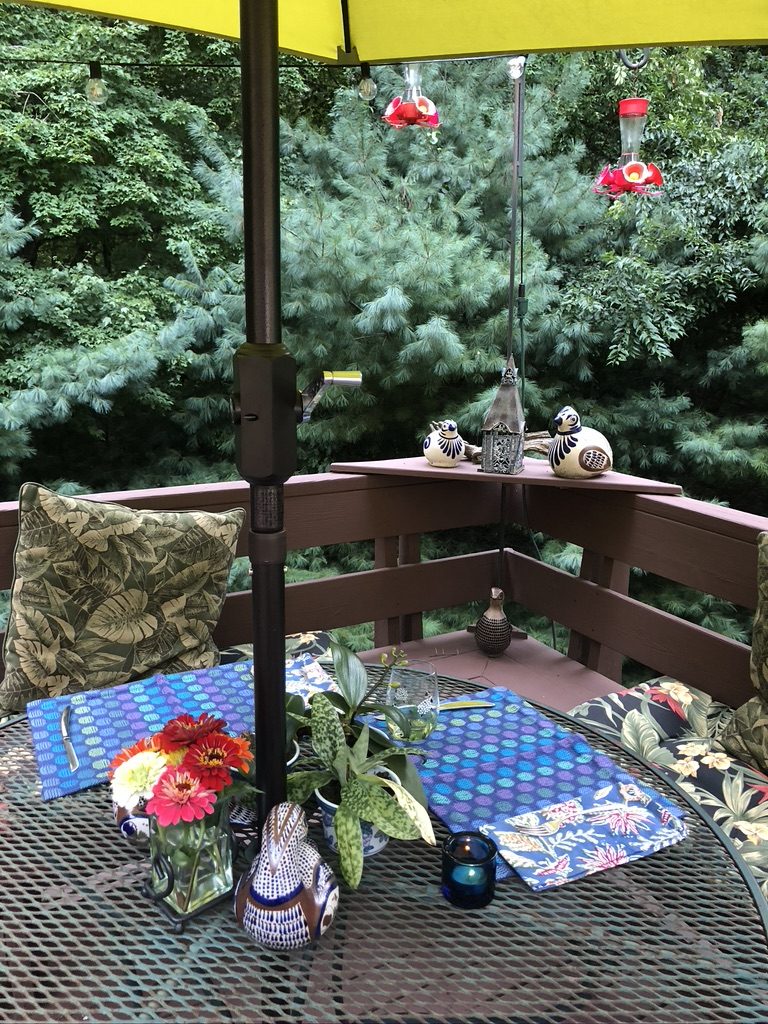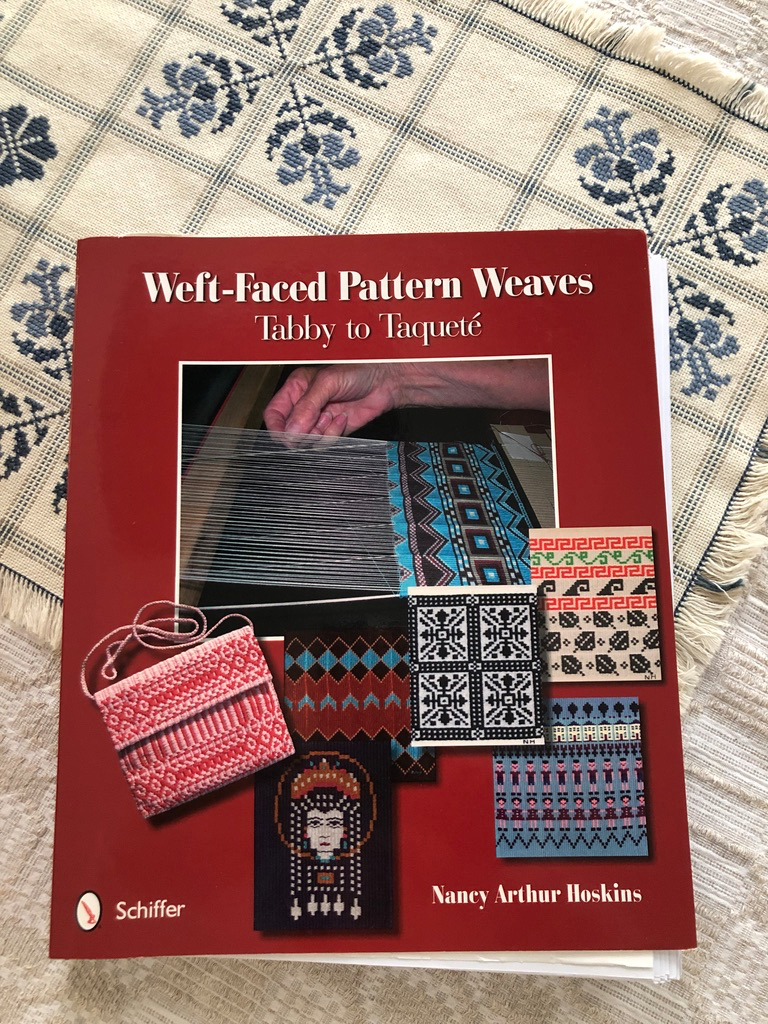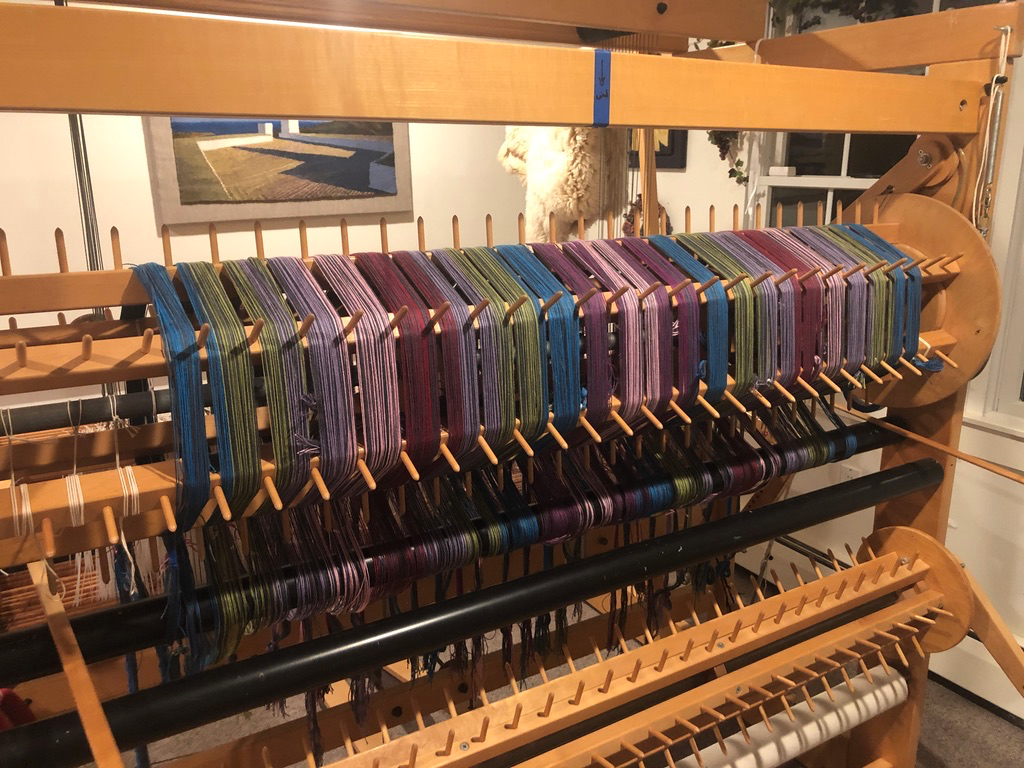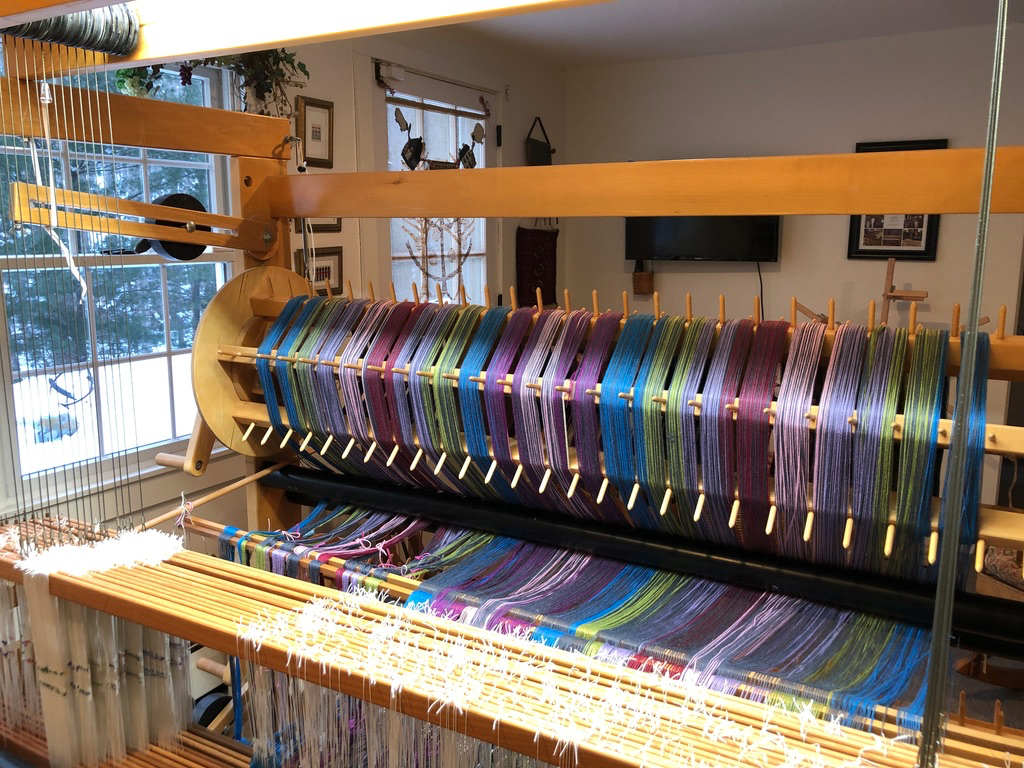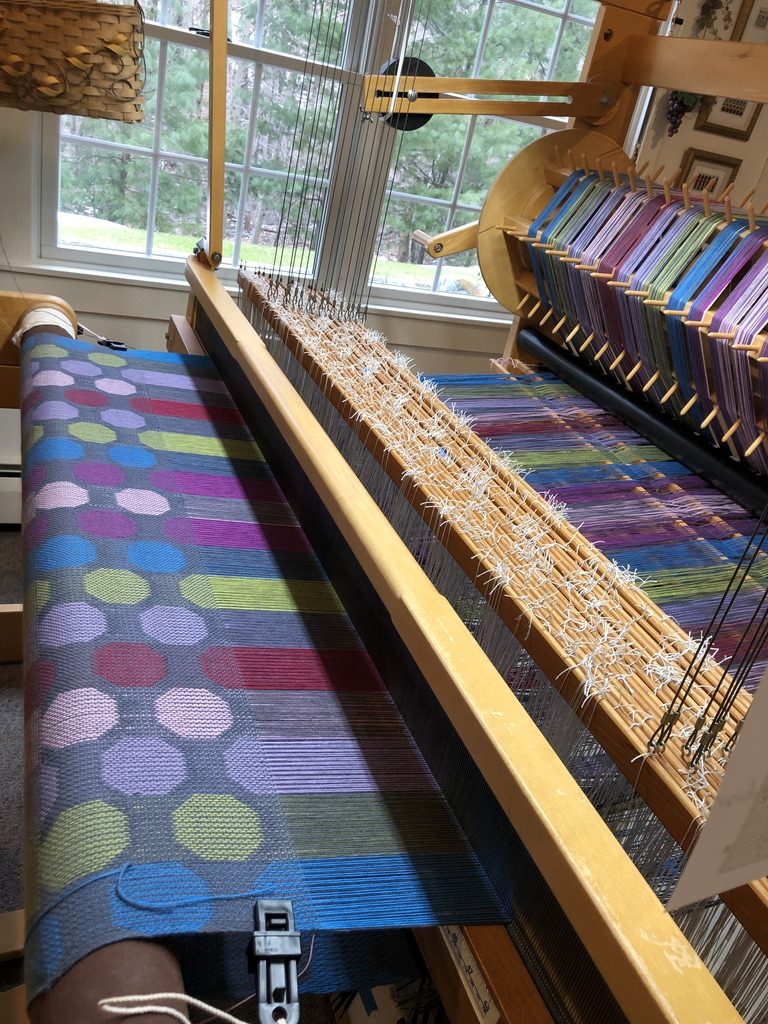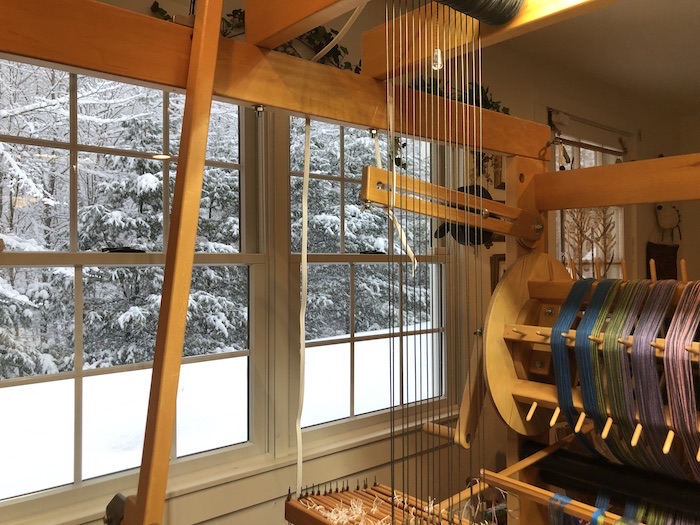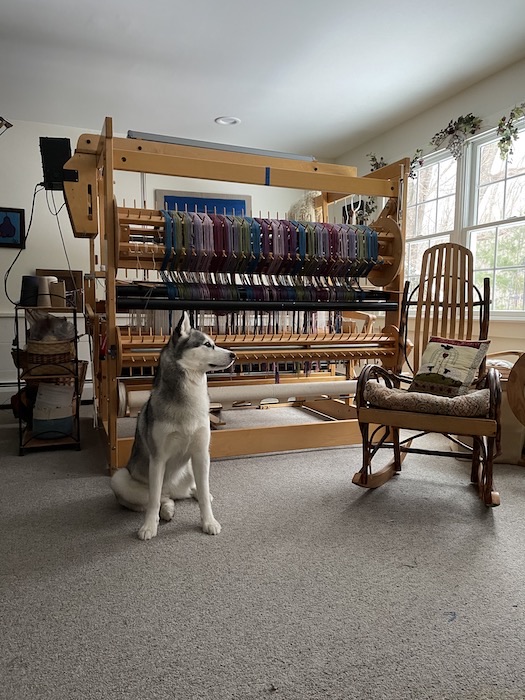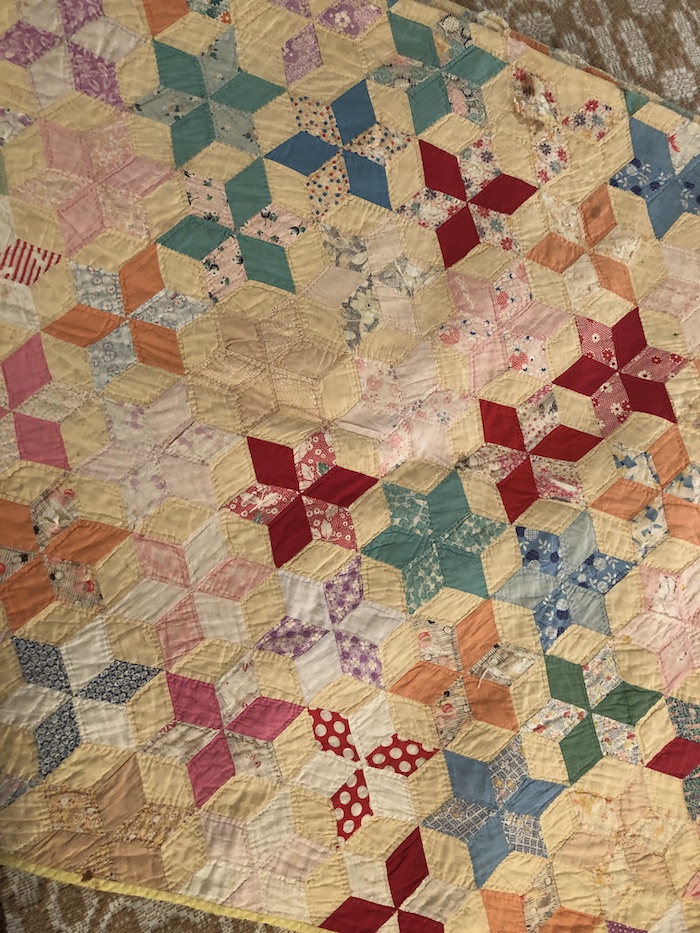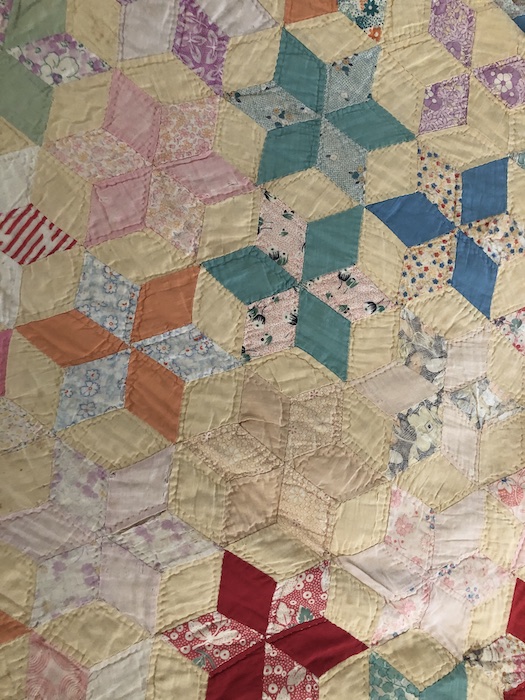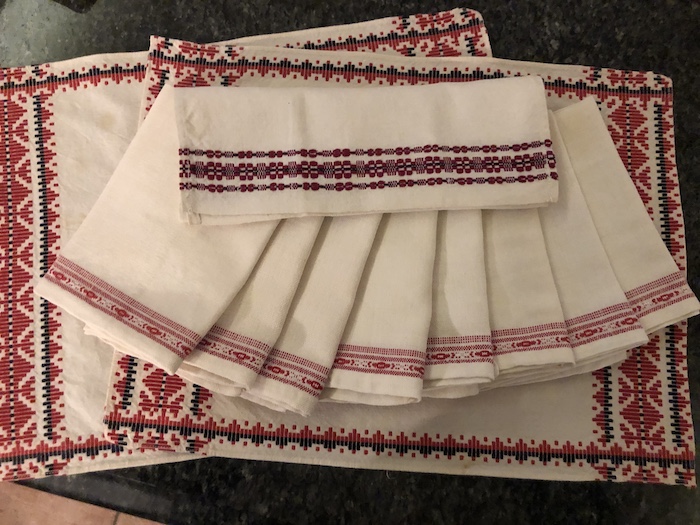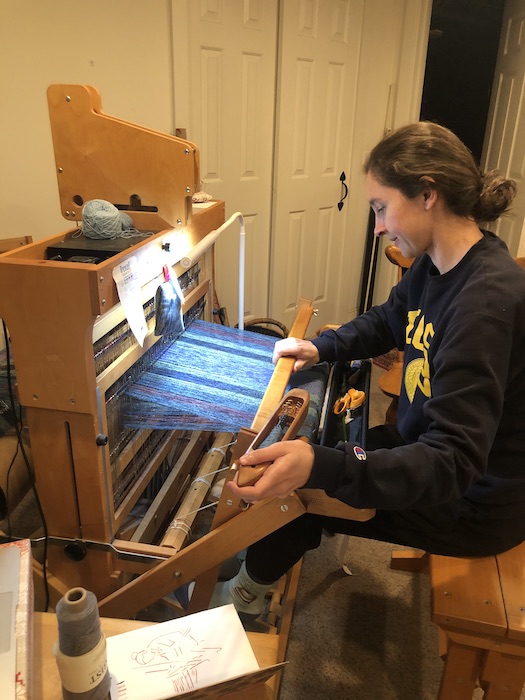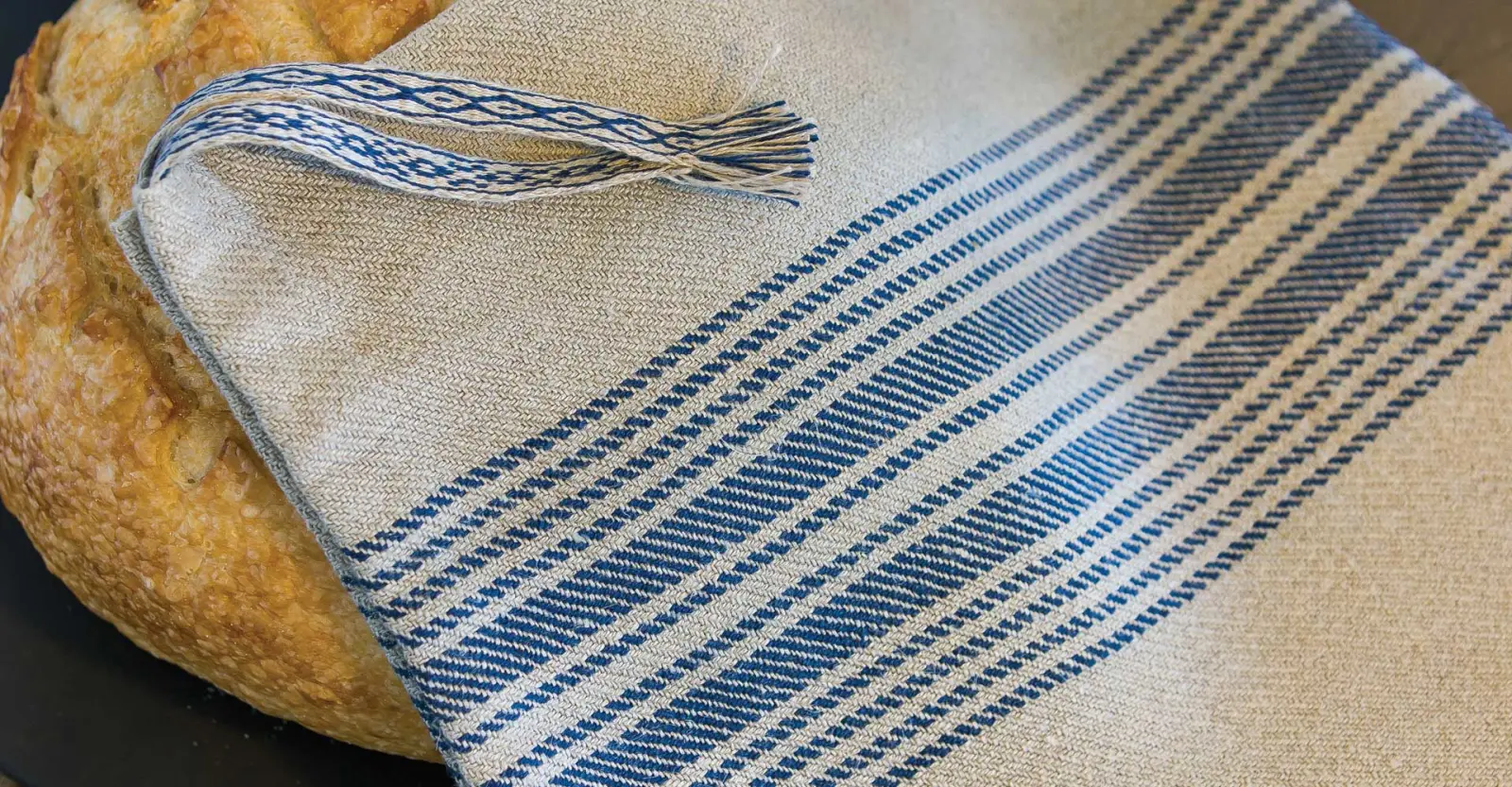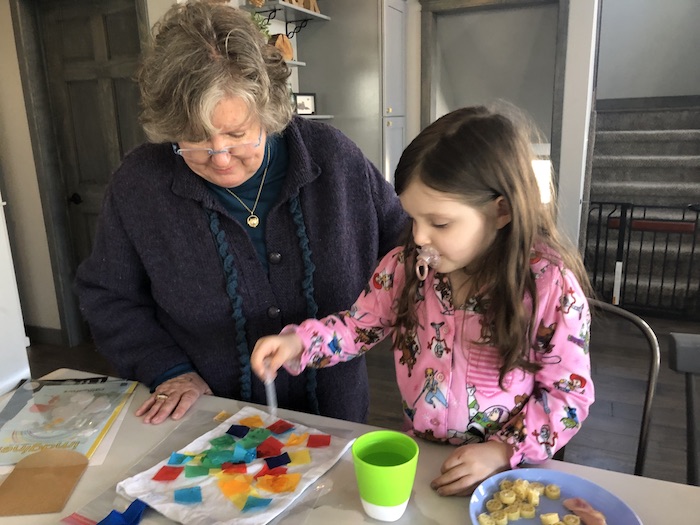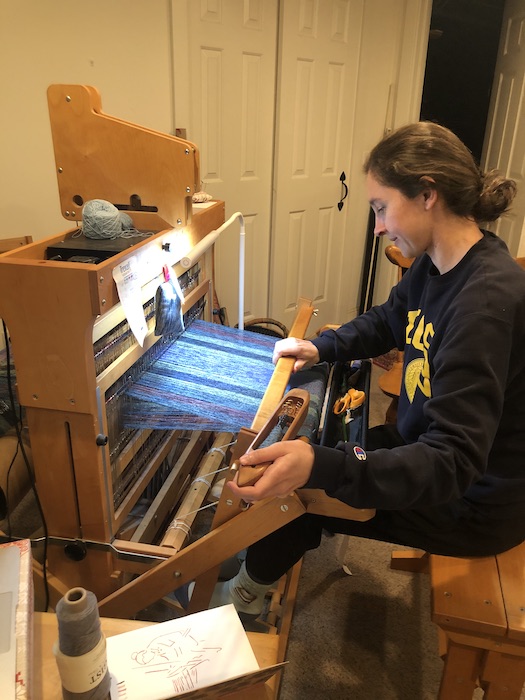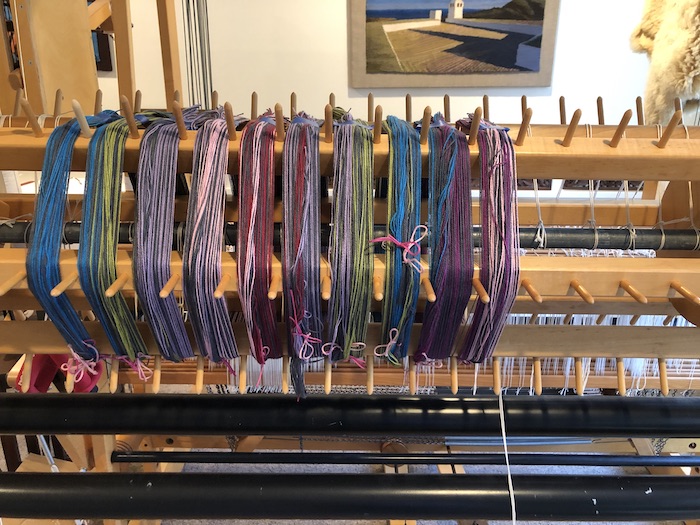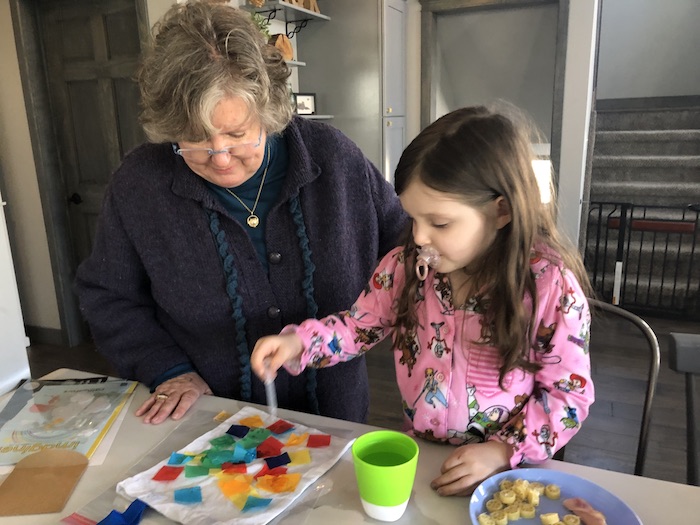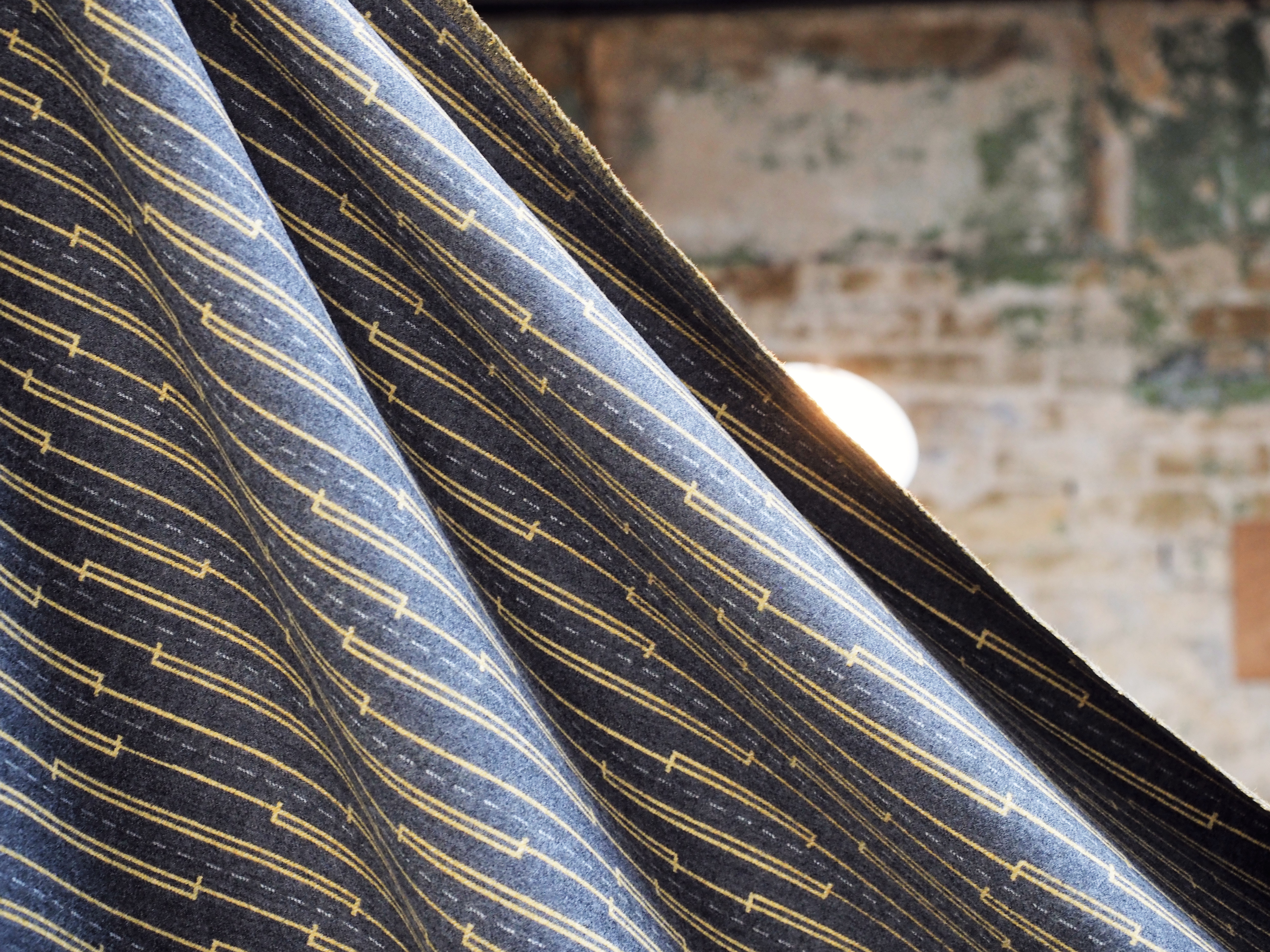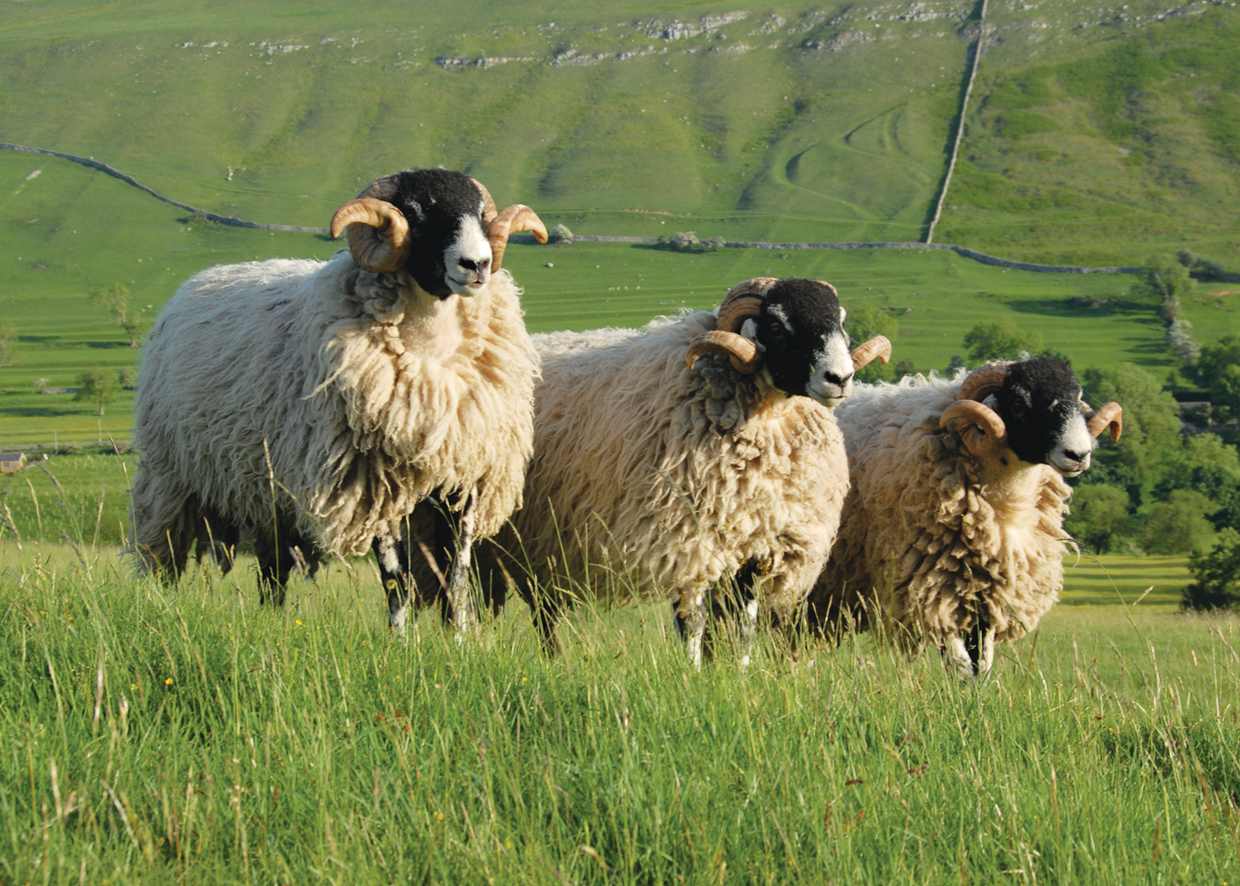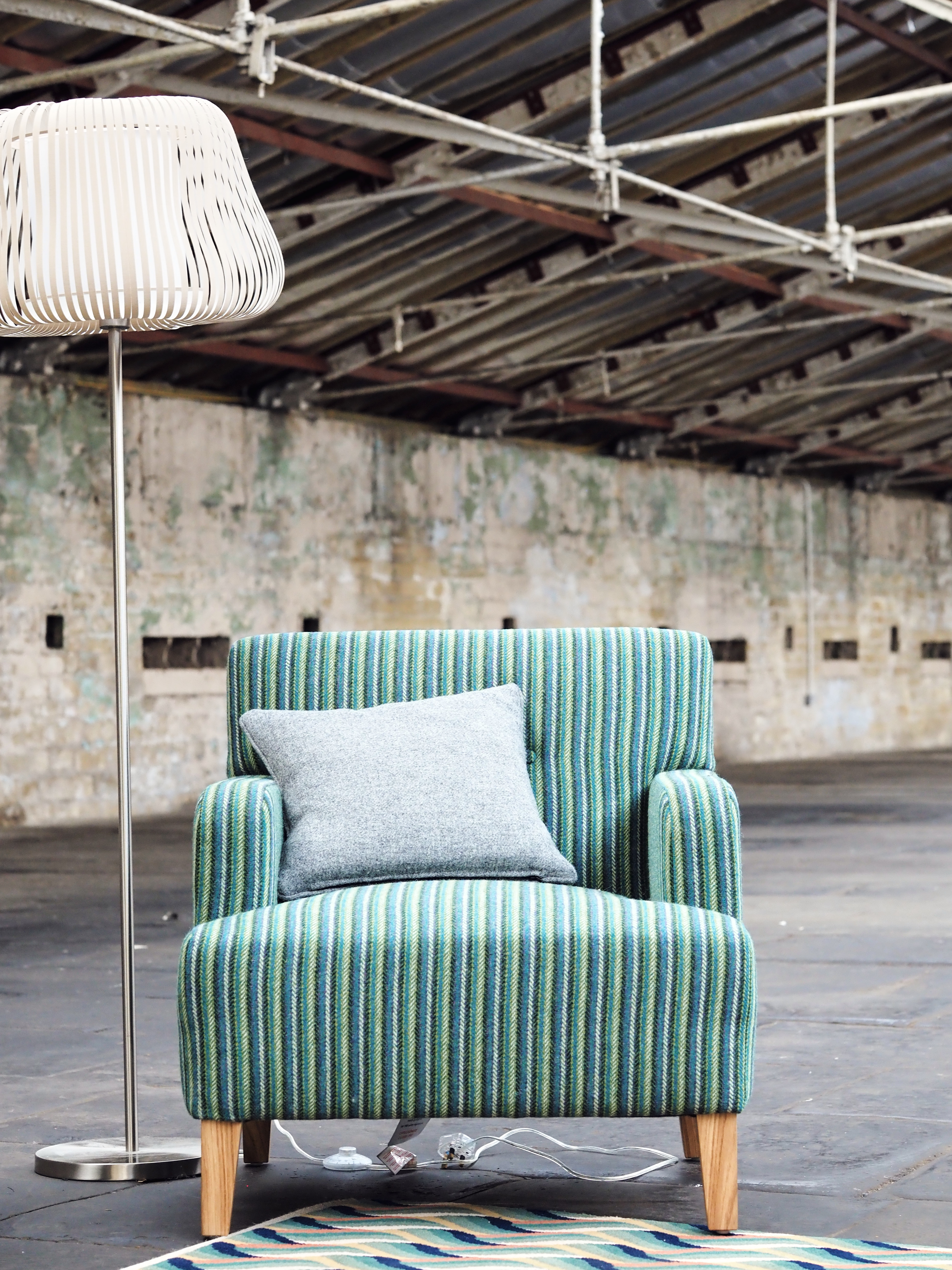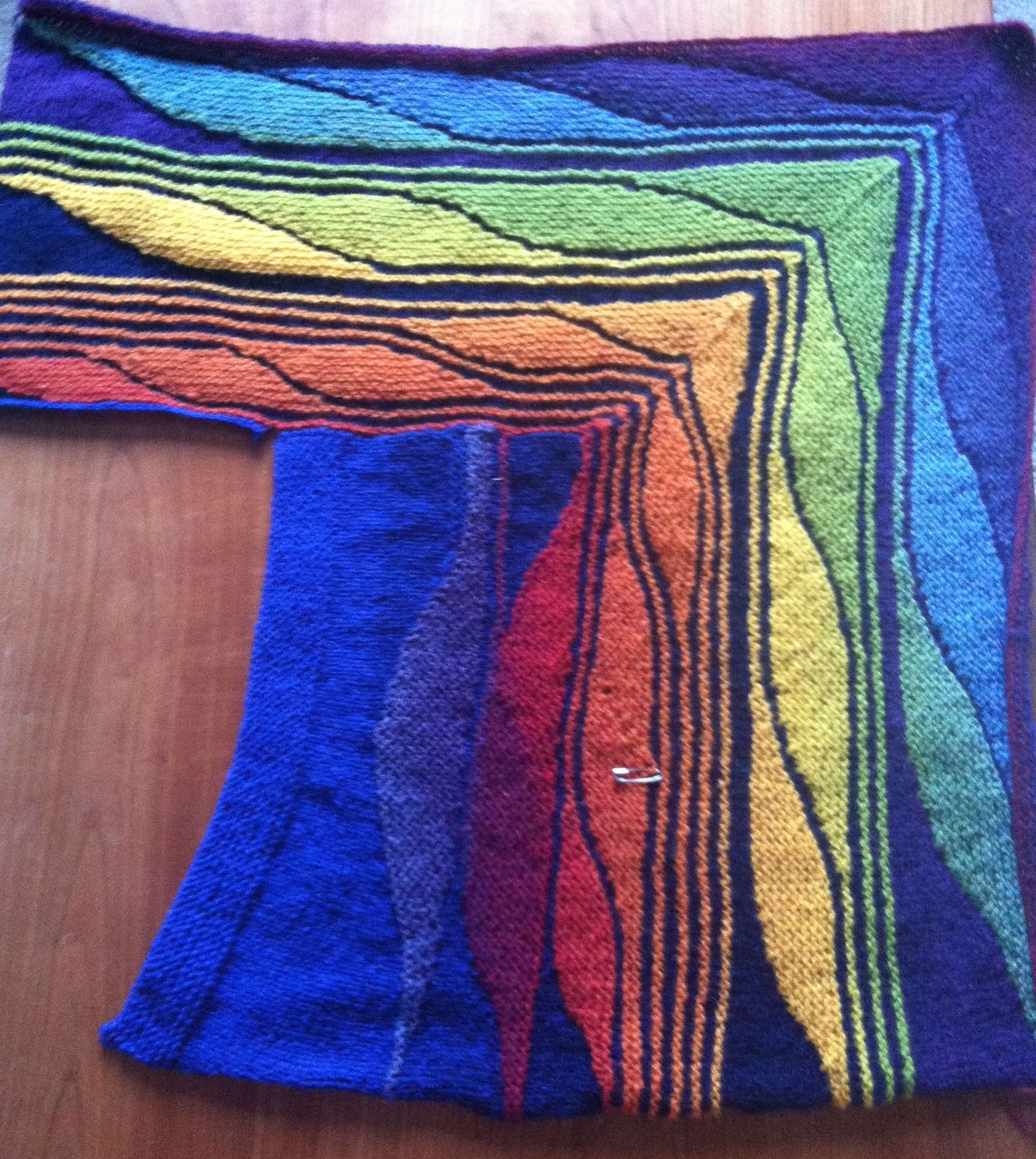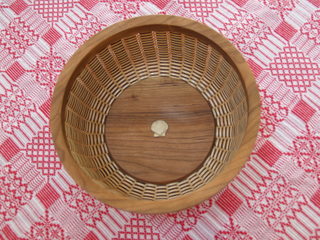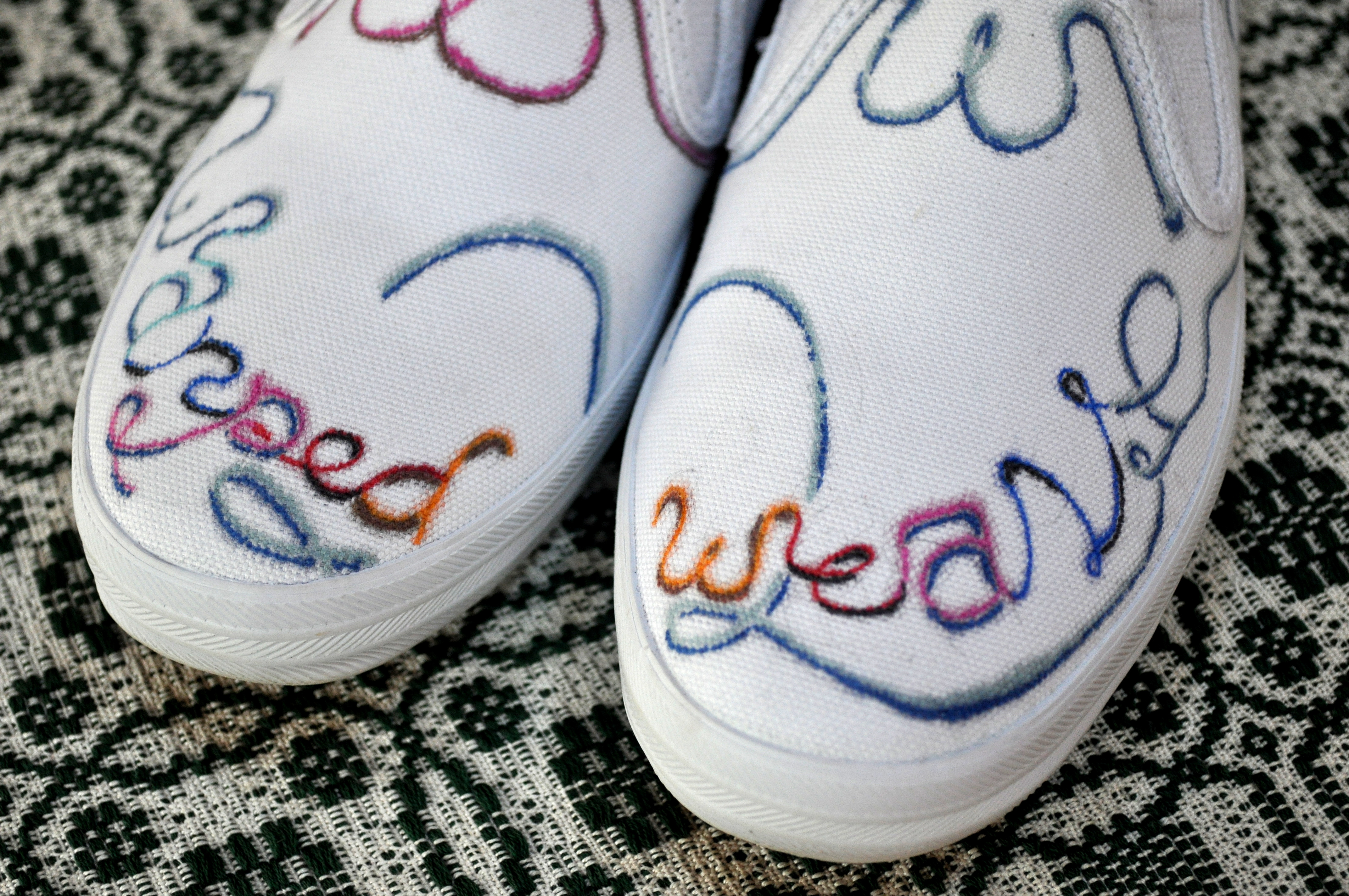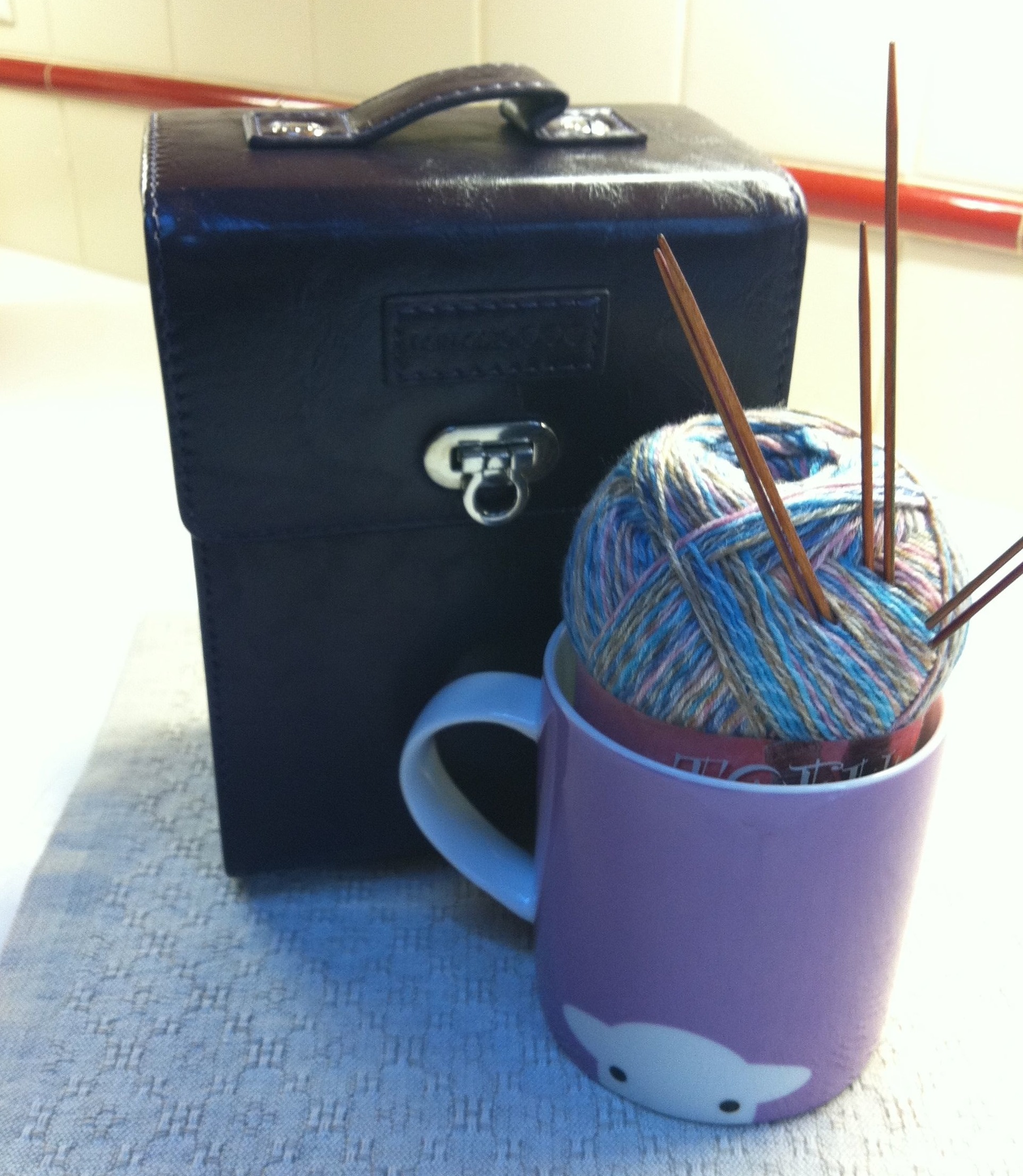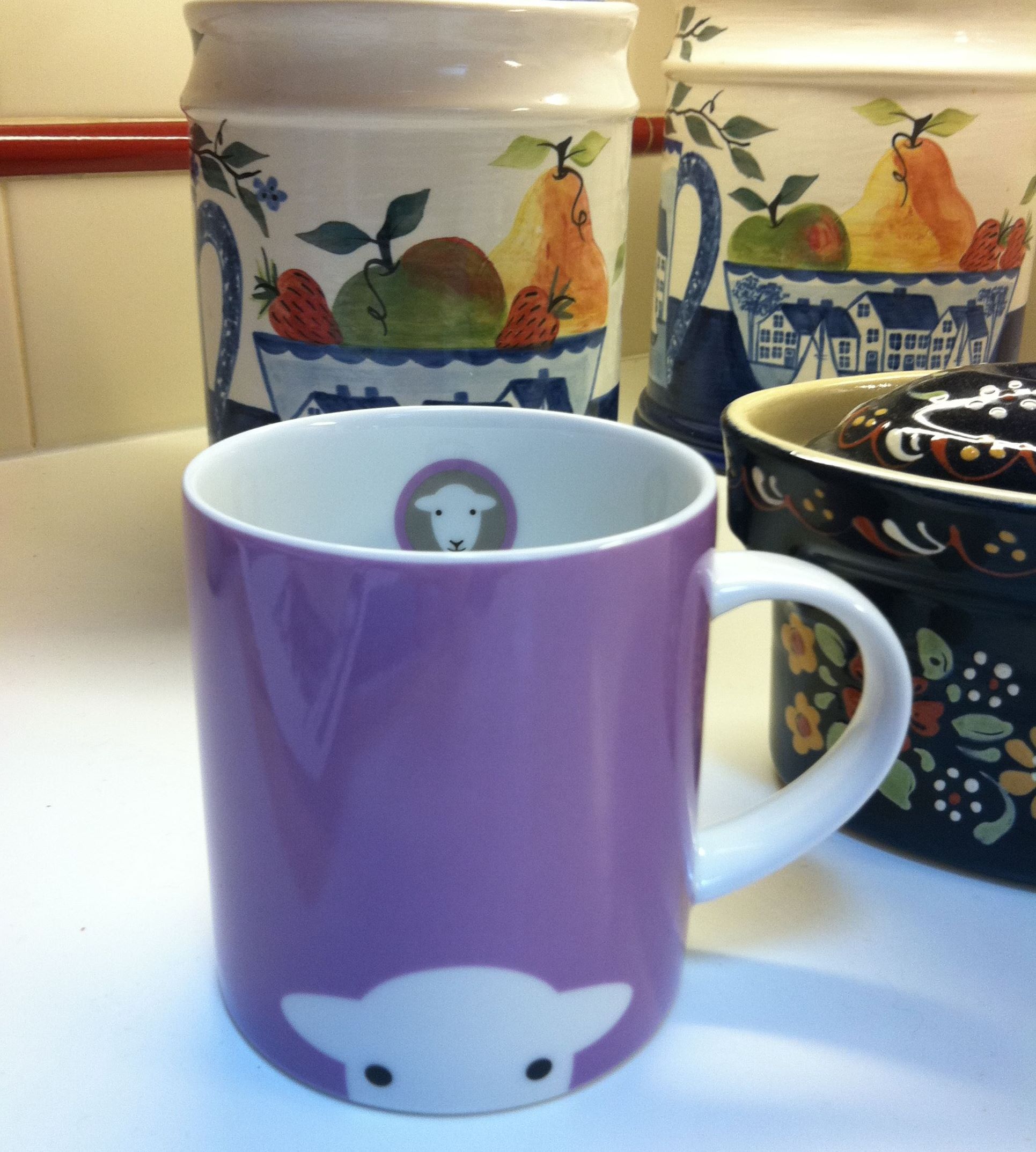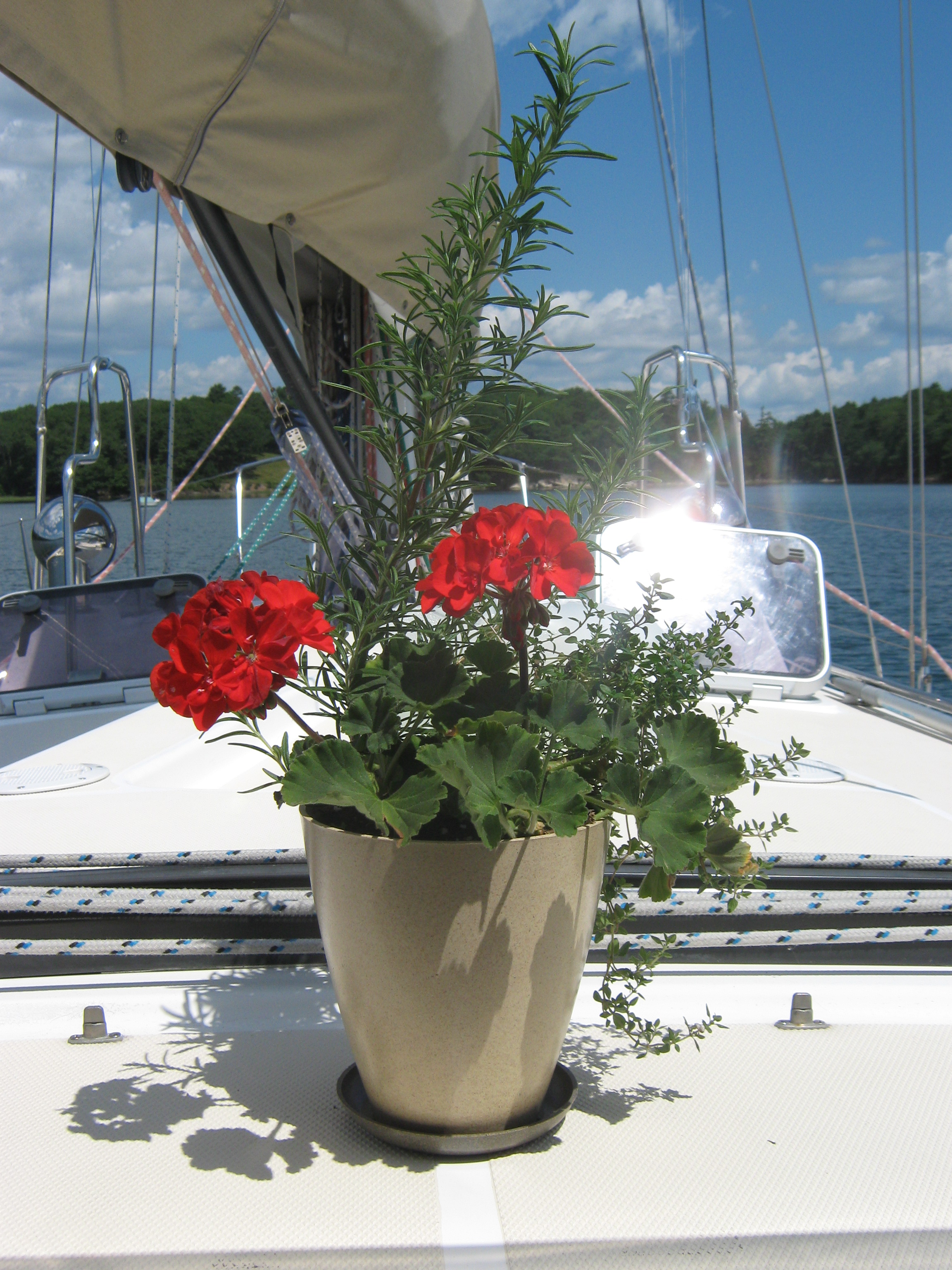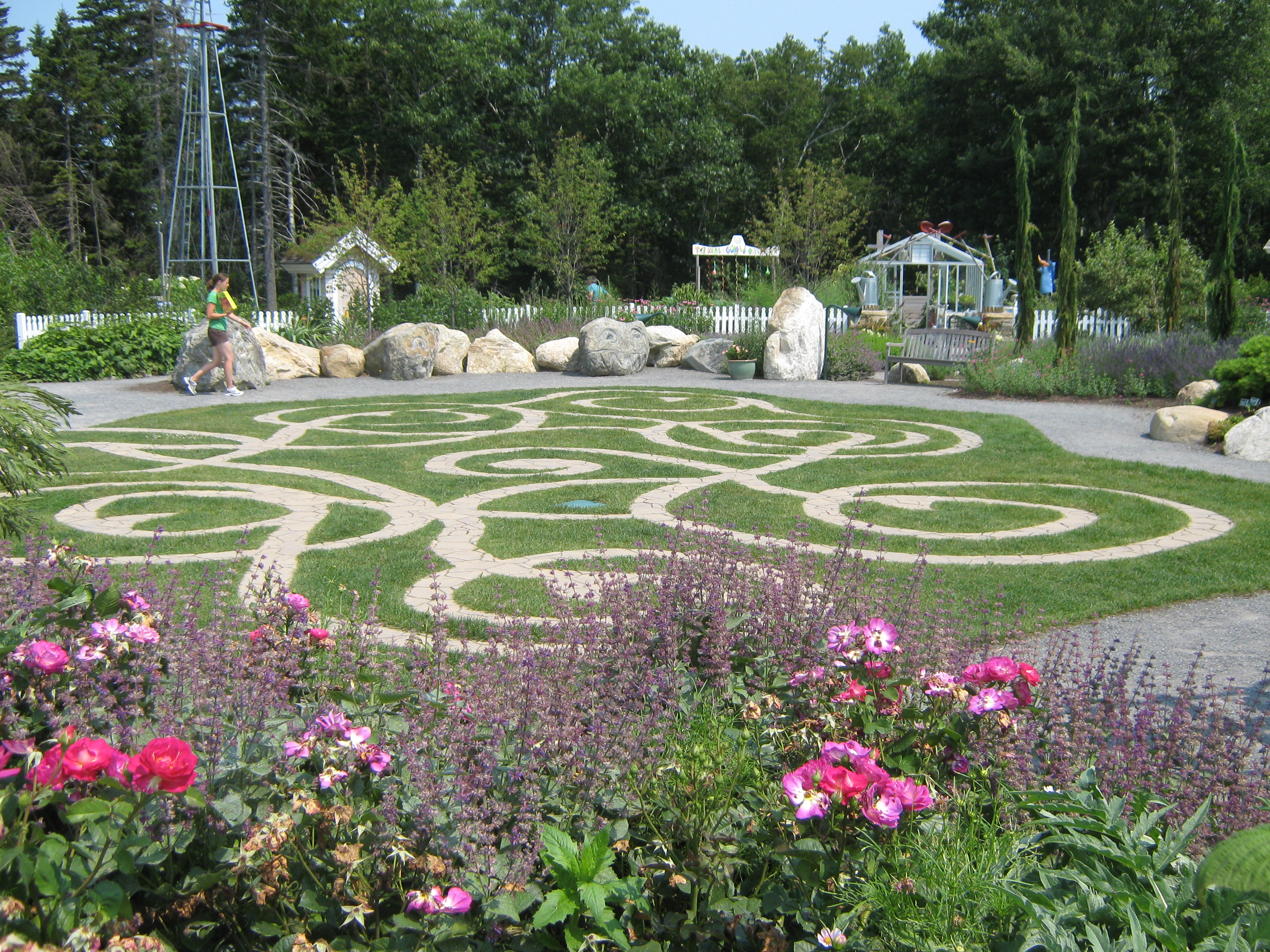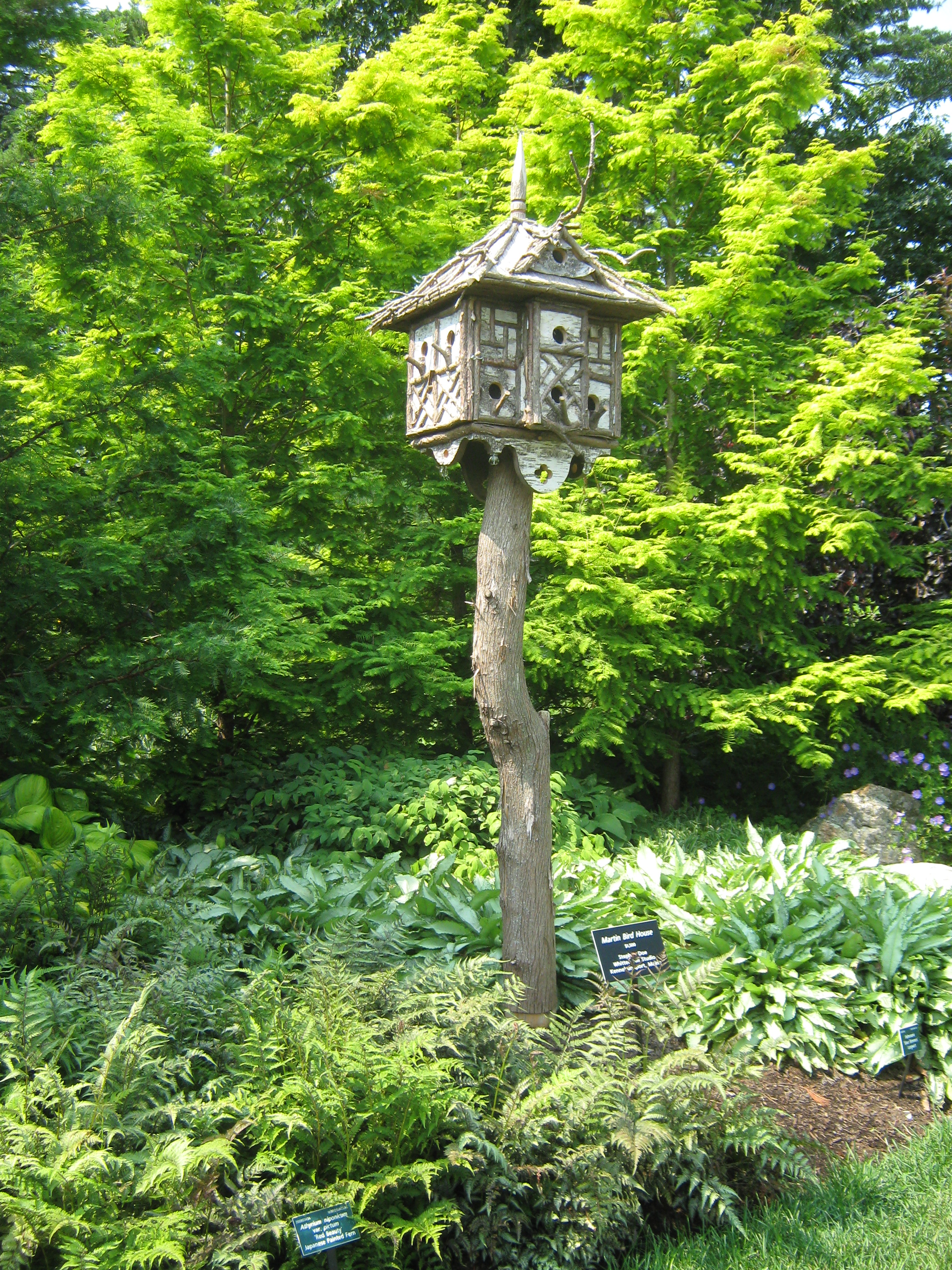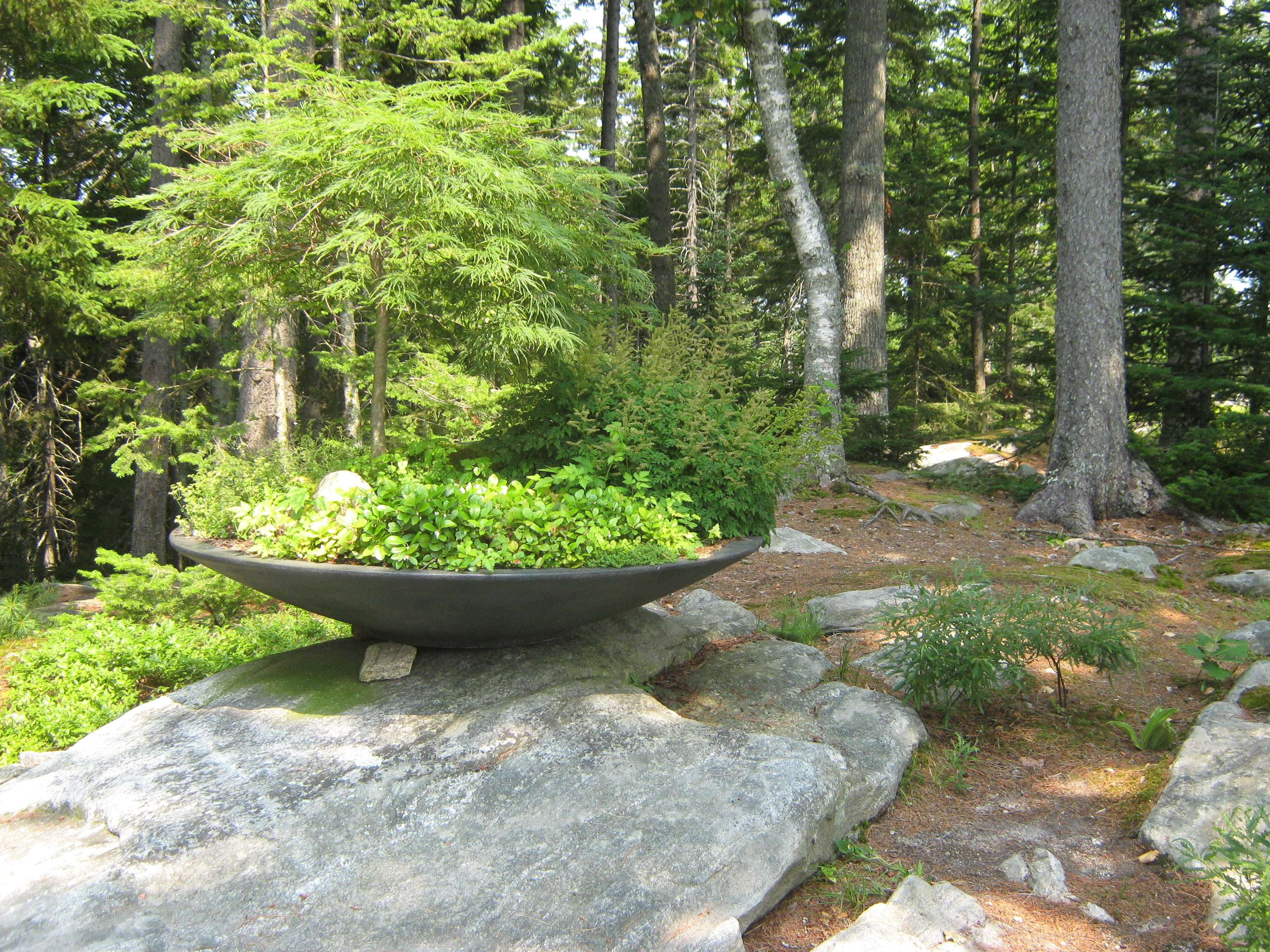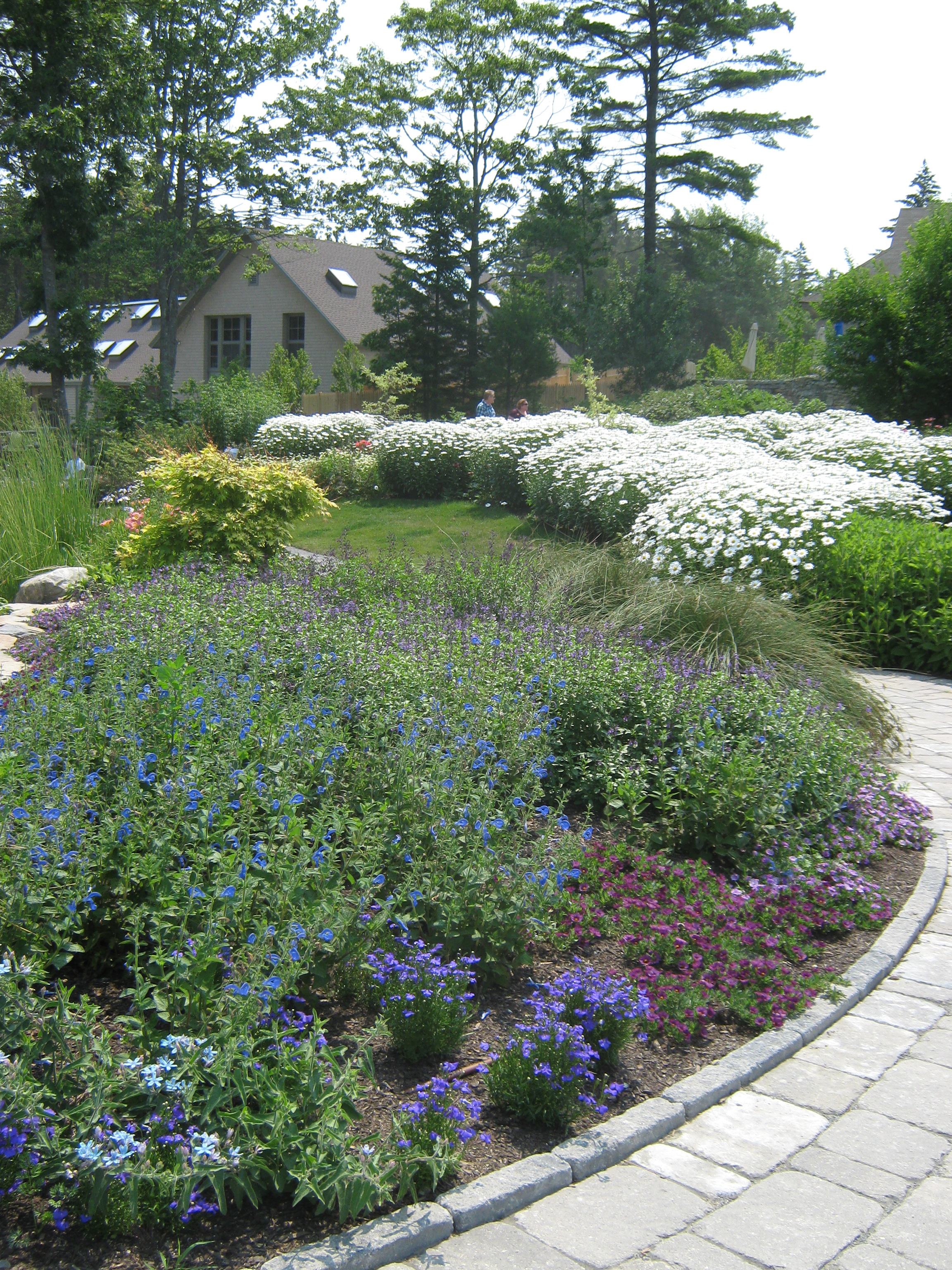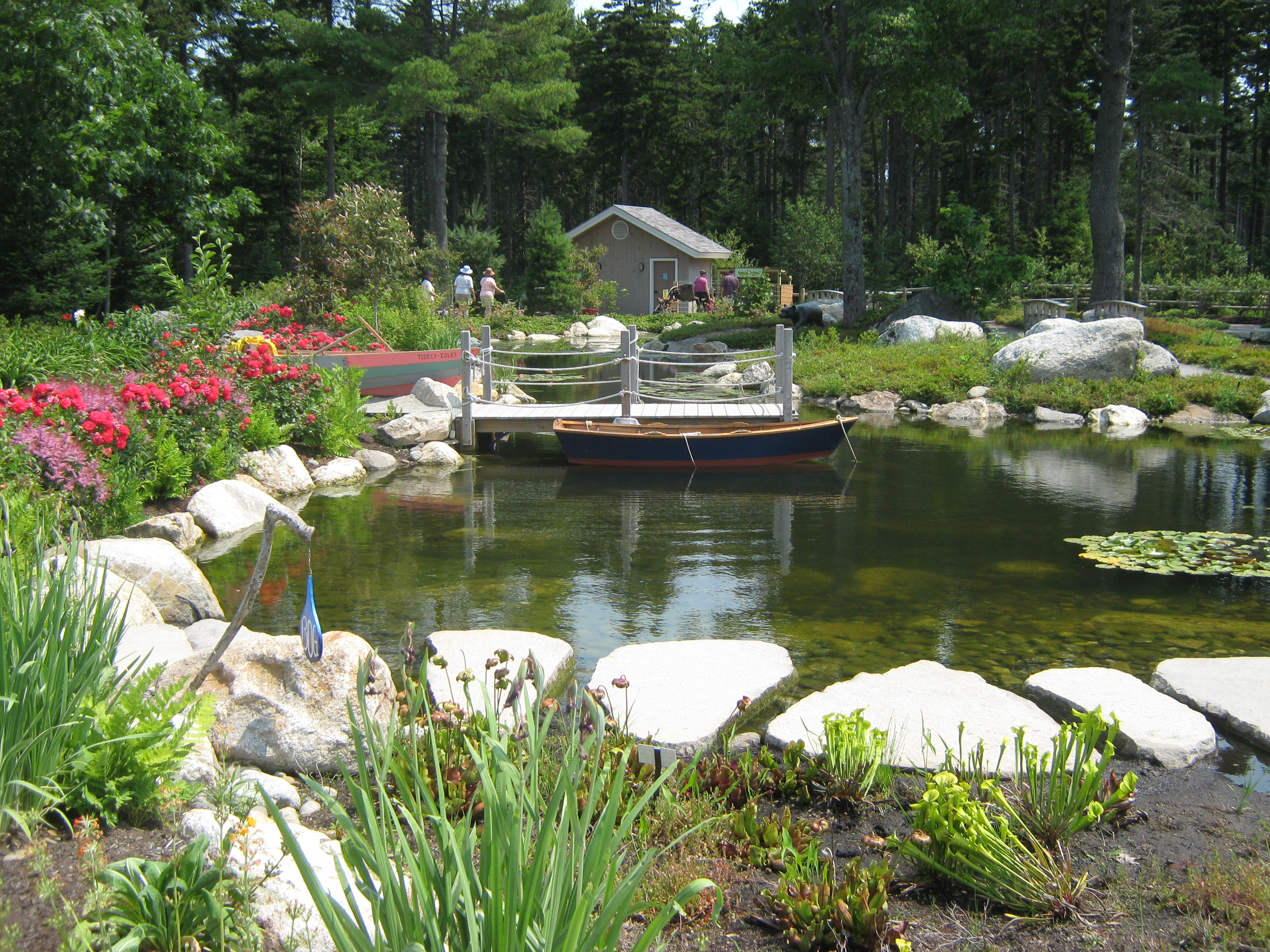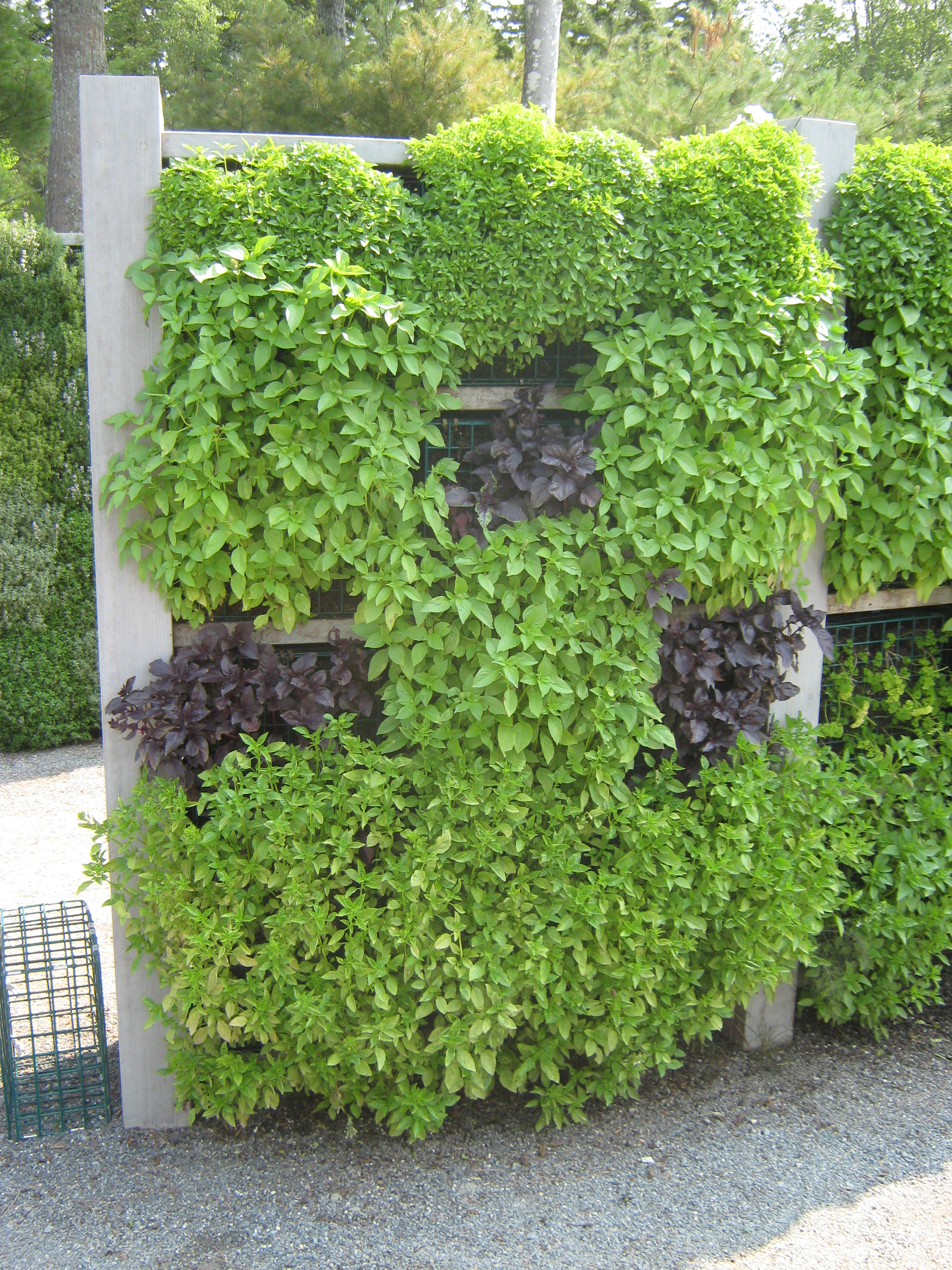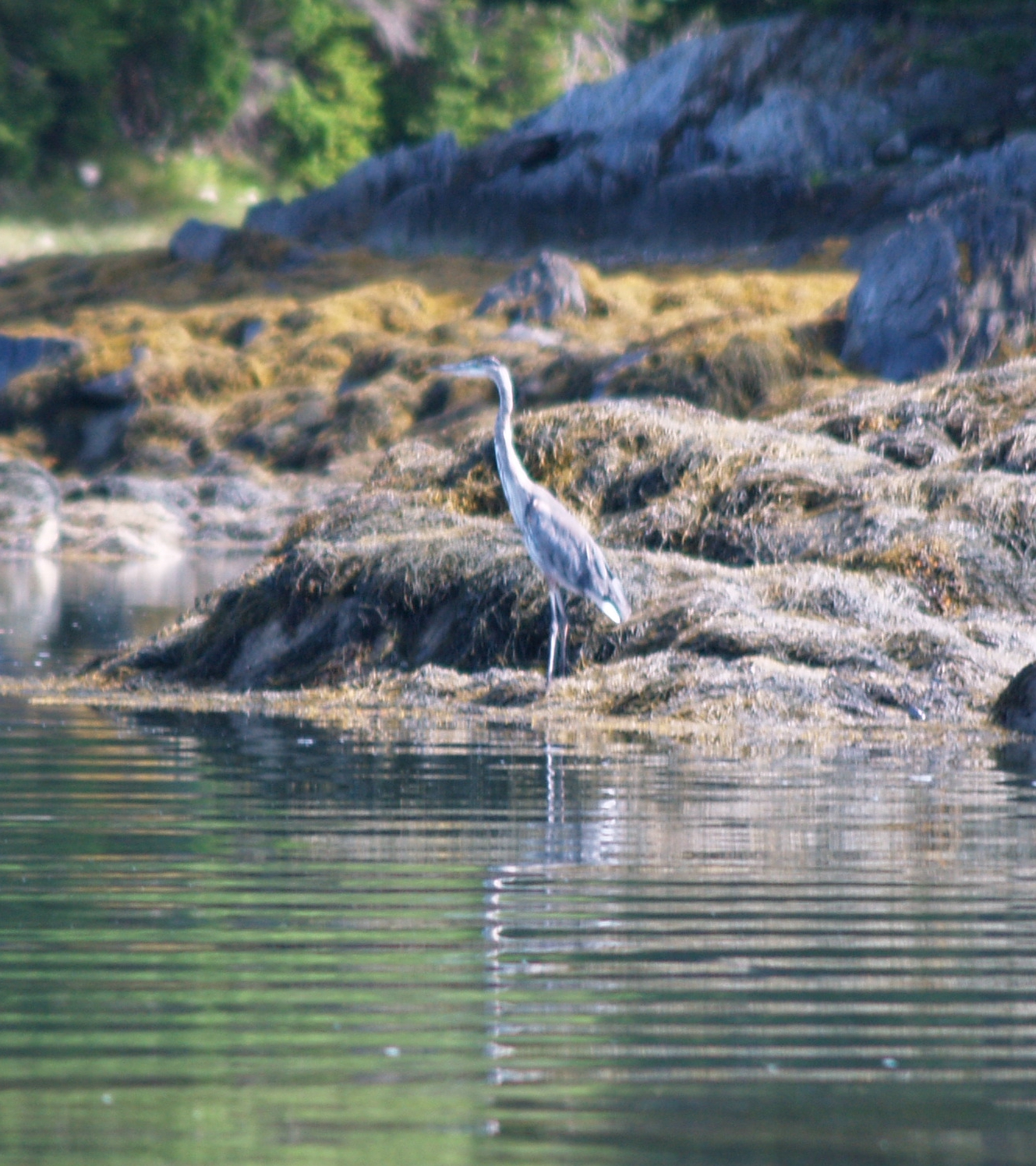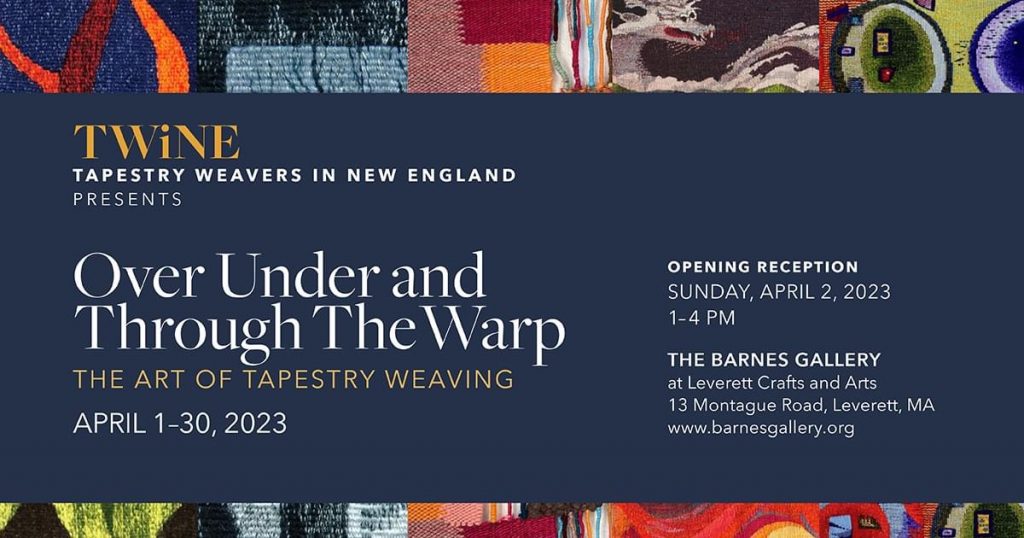There’s nothing like finishing a weaving project, from cutting it off the loom, to wet finishing, to seeing what the cloth truly becomes when it’s all done. There is a saying about handwoven cloth– it’s not finished until it’s wet finished!
I’ve had a lot going on over the past few months that prevented me from weaving this project on a regular basis. When that happens the long awaited finish is even sweeter. Here is Tori’s blanket.
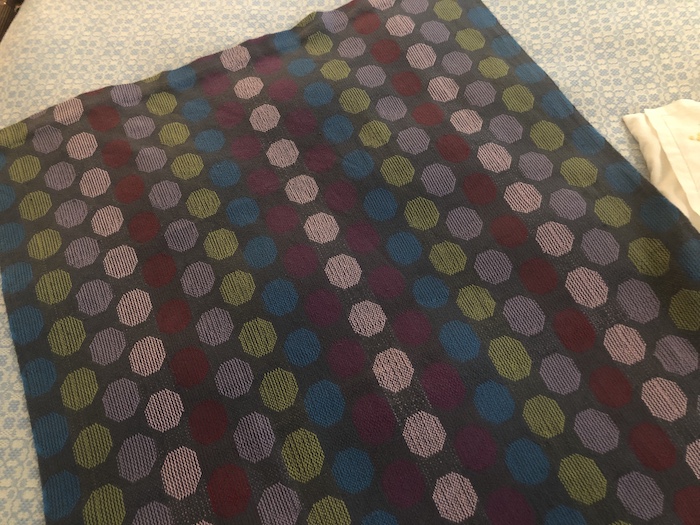
Some of the details…
–I wanted bigger circles than was possible in the original draft from Handwoven, written by Susan Poague (that would be Handwoven, May/June 2019). That draft used 8 shafts in a structure called ‘turned taquete.’ I enlarged the circles from about 1″ in diameter on 8 shafts, to somewhat bigger than 2″ in diameter by expanding the pattern to 16 shafts. You can find the drawdown here.
–I wanted the blanket to be machine washable and dry-able, so that eliminated the possibility of using wool. Wool would have been my first choice, but I did not want to use super wash wool for a number of reasons. For one thing, I have not found a super wash wool fine enough for what I wanted to do with this project. I used 6/2 unmercerized cotton (Valley Cotton, from Webs) sett at 20 ends per inch. It washed and dried beautifully, and became quite soft to the touch. All good!
–I debated on size. Making it the size of her full bed would have been cumbersome, although doable. I opted for a large throw so she could use it in a number of ways. On the loom it was 45″ by 66″. After wet finishing it is now 40″ x 58″. I love the way it feels!
Circles are terrific fun! I hope you will check out Susan Poague’s article in the Handwoven issue above, or use the link to my draft for larger circles if you have 16 harnesses. I would still love to try this in wool…maybe 18/2 merino, in colors that would work in my den. I am dreaming of this as a throw for winter nights in front of the fire, in various autumn golds and ochres with a few circles of red and deep green.
Next up on my weaving list is Tom Knisely’s idea for “paper towels” from Handwoven, March/April 2021. The article is titled “Redefining the Paper Towel.” He used 8/2 cotton for the warp sett at 20 ends per inch. He used the 8/2 for most of the weft as well, with a few stripes of paper yarn at regular intervals. The paper yarn he used is “Shosenshi” from Habu Textiles. It is a 100% linen paper….fascinating. Tom used white. Here is the image from Habu’s website.

Since I prefer linen, I have made my warp in natural colored cottolin from Camilla Valley Farm. I am threading the warp in Goose Eye, and I will use a very fine white linen weft as tabby between my paper pattern weft. Habu carries Shosenshi in a lovely spring green which I couldn’t resist.
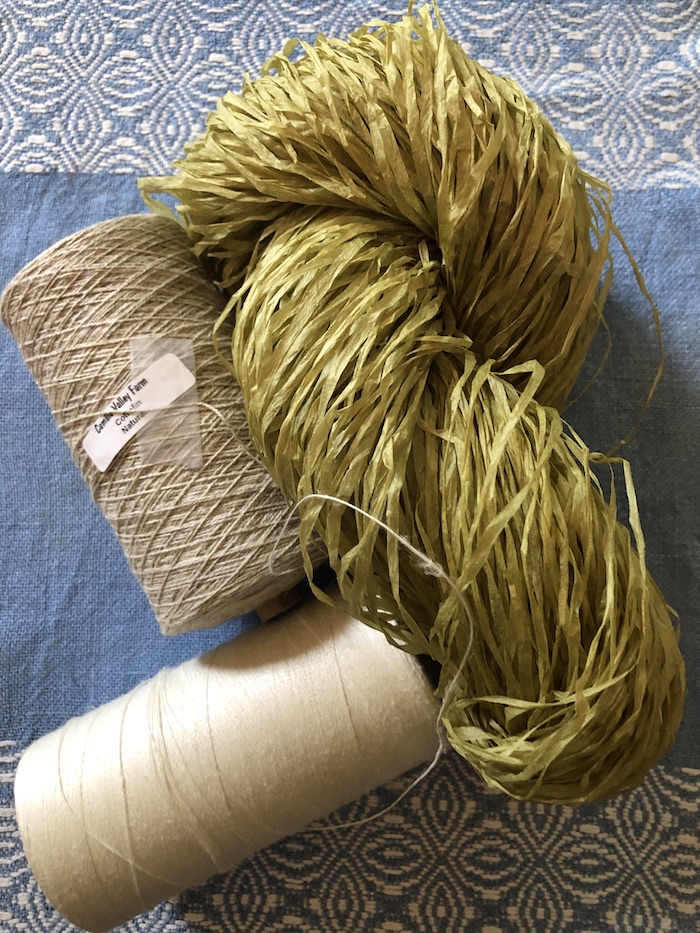
Tom played it safe weaving his towels in plain weave stripes, and I know I should follow his lead. I wonder if my Goose Eye floats will end up snagging and tearing…but I can’t resist the idea of concentric diamonds in paper, hopefully held well in place by fine linen. I’ll have 4-thread floats all over, with a few that are longer. At 24 epic, the 4-thread floats will only be between 1/8″ and 1/4″. Still, that could be troublesome for the Shosenshi. Here is my draft.
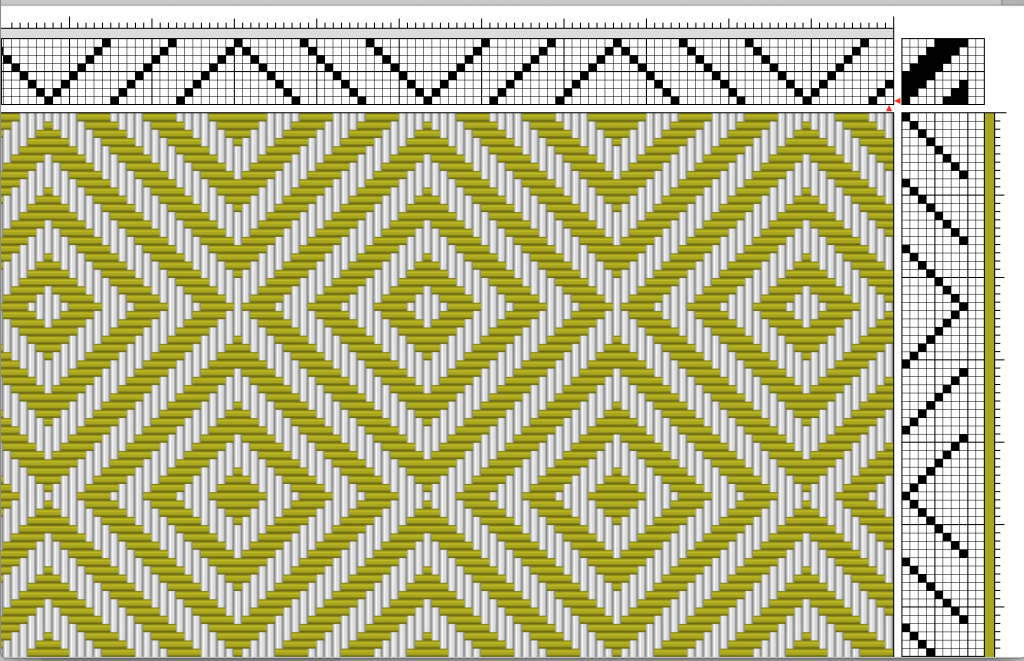
The warp is made and now wound on my smaller loom–the 8S Baby Wolf. This warp is 20″ wide and sett at 24 ends per inch. I am about 2/3’s done threading as I write this. I know this will be a fun project; I just hope that the paper towels will hold up to washing and drying and doing duty in the kitchen! I’ll do a sample at the start and cut it off to wash and use in the kitchen to test the fabric. Stay tuned, and if you also give this project a try, please let me know!
Did you notice that placemat in background of my photo of the yarns for the paper towels? That’s a very old project for placemats made in single ply blue linen with a bit of honeysuckle patterning at both ends in a fine white cotton. These placemats are about 30 years old now, and I only made four back then. I have recently realized that they are the only placemats I ever made in blue! I’m not sure how that happened since my everyday dishes are blue. I guess whenever we’ve had more than four people at the table I have used a tablecloth. Various other placemats I’ve made over the years coordinate with blue or go with my various holiday china patterns, but are not blue themselves. Now I am positively committed to having blue placemats on the new cherry table that Bob made. I want some of that beautiful figured cherry grain to show, no matter how many people we have at the table.
That means I’ve been looking at new ideas for placemats. I would love to weave these again, as they were an enjoyable project all those years ago. I know I would not get the same yarn, and I’m not sure how I feel about trying to find something to coordinate with this linen. It was linen from Finland, possibly Vaxbo, but I didn’t keep a record. I believe it was an 8/1 linen that I used for both warp and tabby weft. I have some thinking to do about this project, but one of the patterns that is quite tempting is from Webs. It’s called “Summer Elegance Runner” that is an 8-shaft overshot in multiple colors sett at 24 ends per inch. It uses 10/2 cotton in various spring colors. I bought the drawdown a while back, and this week I set aside some linen yarns from my stash to consider. It’s a hard decision because I still love my blue honeysuckle mats. I’m sure there will be more ‘thinking out loud’ on this here in the coming weeks.

My possible yarn choices…. the middle color is really a pale green. My main color will be blue.
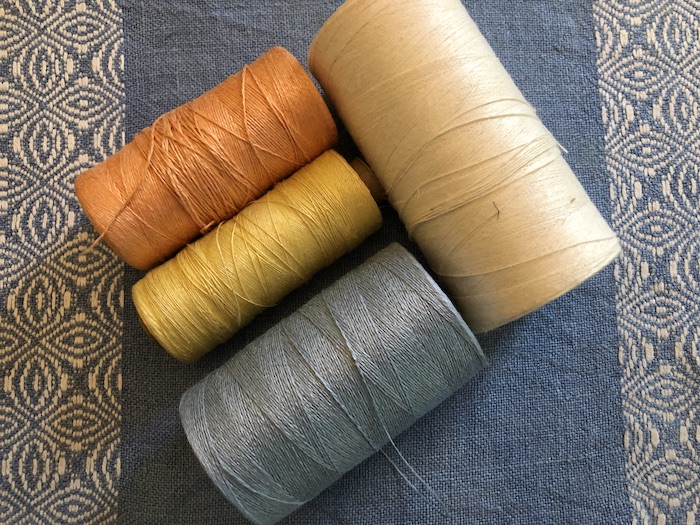
Got any advice or preferences? Please get in touch!


